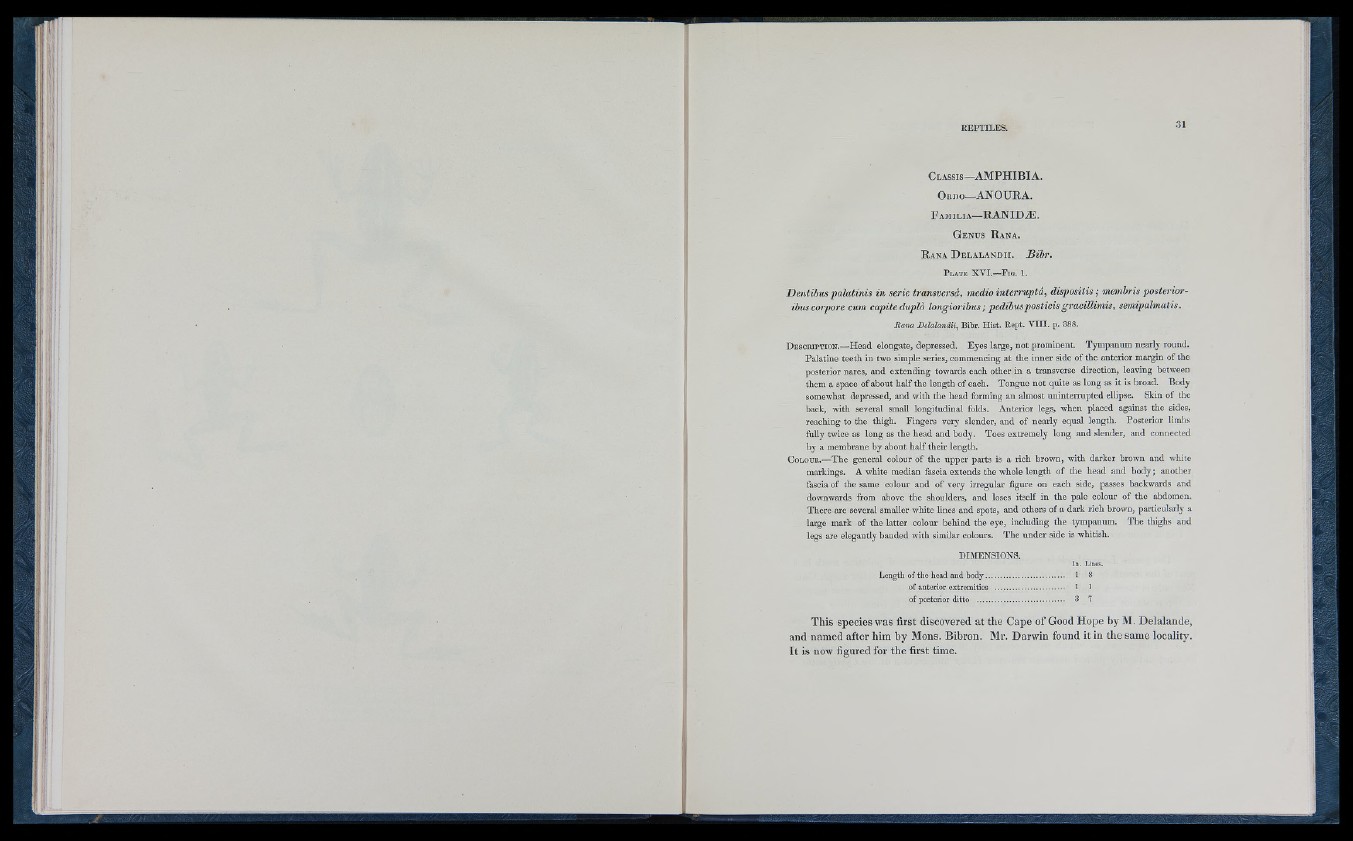
C l a s s i s— AMPHIBIA.
Ordo—ANOURA.
F a m i l i a — R A N ID .^ .
G e n u s R a n a .
R a n a D e l a l a n d i i . Bibr.
P late X V I . - F ig . 1.
Bentibuspdlatinis in serie transversd, medio interruptd, dispositis; memhris posterior-
ibus corpore cum capite dupld longioribus; pedibusposticis gracilUmis, semipalmatis.
Rana Delalandii, Bibr. Hist. Rept. V I II. p. 388.
D e sc r ip t io n .— H e ad elongate, depressed. E y e s large , n o t prominent. T ym p an um n ea rly round.
P a la tin e te e th in two simple series, commencing a t th e in n e r side o f th e a n te rio r margin o f the
posterior nares, a n d ex te n d in g towards ea ch o th e r in a transverse direc tio n , leaving between
th em a space o f ab o u t h a lf th e len g th o f each. T o n g u e n o t qu ite as long as i t is broad. Body
somewhat depressed, an d with th e head forming an almost u n in te rru p te d ellipse. S kin o f the
back, with several small long itu d in a l folds. A n te rio r legs, when plac ed aga inst th e sides,
re aching to th e thigh. F inge rs very slender, an d o f n e a rly equa l len g th . P o ste rio r limbs
fully twice as long as th e h e a d an d body. Toes ex trem ely long an d slender, and connected
by a membrane by about h a lf th e ir length.
C olour.—T h e g en e ral colour o f th e u p p e r p a rts is a rich brown, with da rk e r brown an d white
markings. A white median fascia extends th e whole le n g th o f th e h ead an d b o d y ; a n o th e r
fascia o f th e same colour a n d o f very irre g u lar figure on ea ch side, passes backwards and
downwards from above th e shoulders, an d loses itse lf in th e pale colour o f th e abdomen.
T h e re are several smaller white lines an d spots, an d others o f a d a rk rich brown, p a rticula rly a
large mark o f th e la tte r colour b eh in d th e eye, in clu d in g th e tympanum. T h e thighs and
legs are elegantly b anded with similar colours. T h e u n d e r side is whitish.
DIMENSIONS.
In. Lines.
Length of the liead and body......................................... 1 8
of anterior extremities ..................................... 1 1
of posterior ditto .............................................. 3 7
This species was first discovered at the Cape of Good Hope by M. Delalande,
and named after him by Mons. Bibron. Mr. Darwin found it in the same locality.
I t is now figured for the first time.